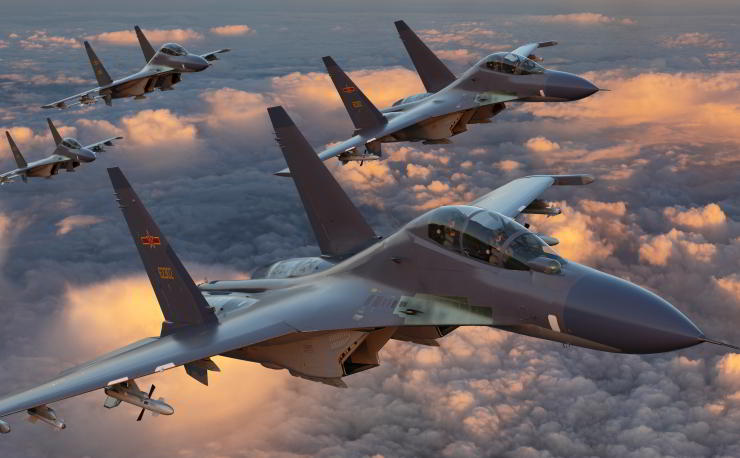China. The soft use of hard military power.

In recent years, Beijing’s international posture has significantly transformed, with greater emphasis on defending its geoeconomic interests, particularly those linked to the Belt and Road Initiative.
Over the past five years, China’s global military footprint has grown significantly, marking a strategic transformation in Beijing’s defence and foreign policy approach. Previously guided by a strict policy of non-interference and a limited overseas military posture, the People’s Liberation Army (PLA) now actively engages in international peacekeeping, overseas basing, joint military exercises, and extensive defence diplomacy.
This shift aligns closely with China’s expanding economic and energy interests abroad, especially those driven by the Belt and Road Initiative, and the imperative to safeguard Chinese nationals and infrastructure overseas. While Chinese diplomats continue to frame military activities as purely defensive, the global expansion of PLA operations follows President Xi Jinping’s order to ‘’be ready to win wars’’ further complemented by the professional growth of China’s private
security sector.
The expansion of China’s global military influence is structured around four strategic pillars: Participation in United Nations peacekeeping operations; development of overseas military bases (notably in Djibouti, allegedly along the Tajik-Afghan border, and potential new sites); enhanced military diplomacy (including joint exercises, counterterrorism training, defence agreements, small arms sales, and military technology transfers); increasing professionalisation of Chinese private security companies (supporting PLA multi-domain operations and local intelligence gathering).
The PLA is significantly enhancing its capability and strategic focus, enabling effective power projection far beyond China’s traditional coastal defence boundaries. The modernisation of the PLA Navy (PLAN) exemplifies this shift, evolving from a defensive “offshore defence” posture toward proactive “open seas protection,” underscoring its ambitions to sustain maritime operations across distant global regions.
Simultaneously, Beijing strategically leverages global counterterrorism efforts to boost PLA operational experience, secure vital international access points, and mitigate threats against Chinese interests worldwide. For instance, under its counterterrorism and maritime security framework, the PLAN has dispatched more than 40 naval escort task forces to the Gulf of Aden since 2008. It also supports evacuation operations, such as those conducted in Sudan in 2023.
The March 2025 circumnavigation of Australia and live fire exercise in international waters between Australia and New Zealand by PLAN warships indicates that the PLAN is moving closer to achieving operational capabilities required for theatre-level missions, including the ability to control critical maritime chokepoints in key
archipelagic regions.
Similarly, the PLA Air Force (PLAAF), though progressing more gradually, aims to become a strategic force capable of long-range missions beyond China’s immediate neighbourhood. The PLA’s doctrinal embrace of non-war military activities highlights an expanded operational scope that effectively aligns military operations with China’s broader global interests, such as noncombatant evacuation operations, in short, the “soft use of hard power.”
China stands as the largest contributor of peacekeepers among permanent members of the UN Security Council, having deployed over 50,000 personnel across three decades. As of 2023, approximately 2,200 Chinese peacekeepers operated primarily in African and Middle Eastern regions closely tied to Chinese investments. Given the PLA’s lack of direct combat experience since 1979, these deployments are crucial for gaining operational expertise in overseas contexts, and they offer valuable opportunities for intelligence gathering.
Although Beijing continues to advocate peacekeeping missions under the UN framework, involvement in volatile conflicts such as those in Ukraine, Sudan, or Yemen does not currently align with China’s strategic objectives. Beijing remains cautious, ensuring deployments remain strategically advantageous and consistent with its overarching geopolitical ambitions.
China is proactively advancing its overseas military logistics infrastructure to enable sustained global force projection. Beyond the established military logistics hub in Djibouti and the allegedly positioned base along the Wakhan corridor, a possible route between Afghanistan and China in proximity to Tajikistan, China is actively assessing and preparing for additional overseas facilities, while being able to count on dual-use port calls.
Prospective regions include strategic locations in Africa, Asia, and the Pacific Islands, notably Cambodia’s Ream Naval Base. Such an expanded logistics network is vital for maintaining long-range operations and safeguarding China’s expanding international interests.
China strategically employs Professional Military Education programs as part of its long-term vision to build global military networks and influence. Targeting primarily junior officers from partner countries, these initiatives aim to foster deeper military ties, doctrinal alignment, and sustained international cooperation. Concurrently, China has significantly bolstered its military attaché network, maintaining offices in over 110 countries worldwide. Military attachés serve critical diplomatic, intelligence, and operational coordination functions, reflecting China’s deepened commitment to sustained global military engagement.
The growing presence of Chinese military equipment at the global level highlights Beijing’s expanding influence. Africa is a case in point. In recent years, China has overtaken Russia as the leading arms supplier to sub-Saharan Africa, a market long dominated by Moscow. According to the Stockholm International Peace Research Institute (SIPRI) Arms Transfers Database, China accounted for 19% of sub-Saharan Africa’s arms imports between 2019 and 2023.
This surge is fueled by China’s competitive pricing and flexible financing options, enabling it to steadily erode Russia’s traditional dominance. In Francophone Africa, sanctions against Russia and rising anti-French sentiment have created a vacuum in the security market, a gap China is quickly moving to fill.
China’s exports to Africa go beyond light weapons and armoured vehicles; they increasingly include advanced military technologies such as high-altitude, long-endurance unmanned aerial vehicles (UAV) and warships. These high-end systems are central to Beijing’s military diplomacy, fostering long-term dependency and deepening China’s strategic foothold across the continent.
While there’s no direct evidence of coordination between the PLA and PSCs, China’s civil-military fusion strategy suggests PSCs may play a growing role in non-combat operations. As China aims to build a military capable of rivalling the U.S. by 2049 through comprehensive modernisation, including advanced weapons, expanded bases, and integrated warfare across land, sea, air, space, and cyberspace – known as Multi-Domain Operations (MDO).
These include humanitarian missions, maritime security, and economic protection efforts, often conducted without direct military force. In this respect, Chinese PSCs have become active in securing commercial interests abroad, from counter-piracy missions in African waters to anti-drone defences in the Red Sea, filling security gaps when PLA deployment is limited, and their expanding footprint comes at a time when the global security landscape is shifting. China’s MDO strategy is leveraging both military and civilian tools to achieve Beijing’s
global goals.
China’s evolving military posture signals a strategic shift from its historically defensive stance to a more outward-facing role aimed at protecting its expanding global interests. In particular, the Belt and Road Initiative has driven Beijing to consider a more active security role abroad, blending development with protection in what some analysts describe as an emerging “overseas security architecture.”
This shift, while marking a subtle departure from China’s traditional non-interference principle, still falls short of stabilisation missions in active conflicts like those in Ukraine or Yemen. Instead, Beijing continues to emphasise stability through development, using peacekeeping and security partnerships to safeguard its economic interests. Geoeconomic considerations have been central to this transition. For instance, China’s decision to establish a permanent naval base in Djibouti reflects the strategic importance of securing maritime trade routes linked to the BRI.
Likewise, China’s growing contributions to UN peacekeeping in Africa serve not only diplomatic aims but also practical ones: stabilising regions critical to Chinese investment. South Sudan, a BRI partner and oil supplier to China, where Chinese peacekeepers are present, is a case in point. Similarly, in Pakistan, security concerns around the China-Pakistan Economic Corridor have prompted China to press Islamabad to create dedicated security forces to protect Chinese personnel and infrastructure. While the PLA has not been deployed there, speculation continues over the growing role of Chinese PSCs in filling this gap.
As a self-styled advocate for the Global South, China’s growing role in peacekeeping reflects its broader strategic vision of promoting global stability through development rather than intervention. The Zhongnanhai’s approach emphasises economic growth as the foundation for long-term peace, particularly in post-conflict regions, offering an alternative to models that prioritise political reform or military solutions. Ultimately, China’s global military engagement remains cautious and calculated, focused not on intervention but on securing development-driven stability in regions where its strategic and economic stakes are high. (Photo: Formation of combat aircraft of the Chinese air force. Shutterstock/Mike Mareen)
Alessandro Arduino/ISPI



